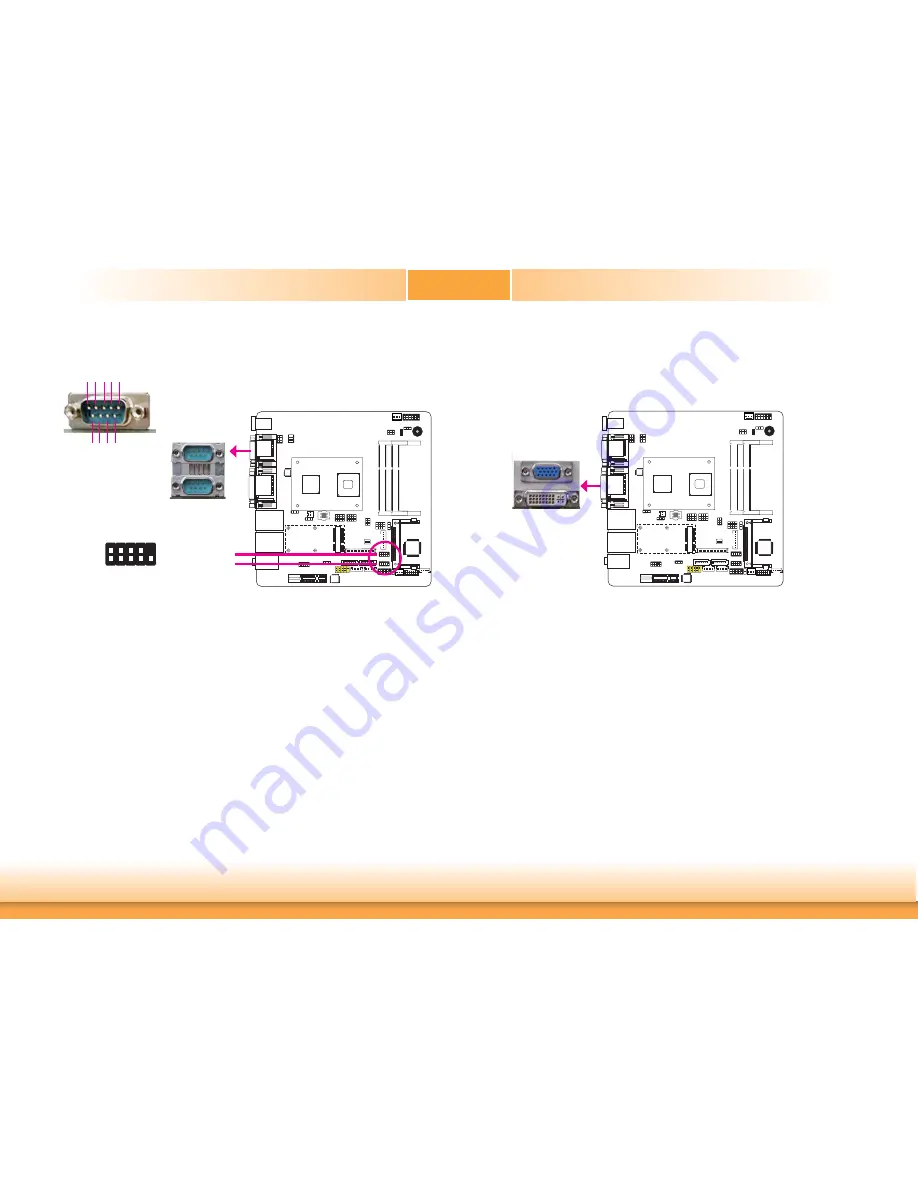
www.d
fi
.com
18
Chapter 2 Hardware Installation
Chapter 2
COM (Serial) Ports
COM 1
COM 2 to COM 4 are fixed at RS232.
The pin function of COM 1 port will vary according to JP2’s setting. Refer to “COM1/COM2
RS232/RS422/RS485 Select” in this chapter for more information.
The serial ports are asynchronous communication ports with 16C550A-compatible UARTs that
can be used with modems, serial printers, remote display terminals, and other serial devices.
Connecting External Serial Ports
Your COM port may come mounted on a card-edge bracket. Install the card-edge bracket to
an available slot at the rear of the system chassis then insert the serial port cable to the COM
connector. Make sure the colored stripe on the ribbon cable is aligned with pin 1 of the COM
connector.
BIOS Setting
Configure the serial ports in the Advanced menu (“Super IO Configuration” submenu) of the
BIOS. Refer to chapter 3 for more information.
COM 1:
RS232/422/485
COM 2
VGA
Graphics Interfaces
DVI-I
(VI-D signal)
The display ports consist of the following:
• VGA
port
• DVI-I port (DVI-D signal)
VGA Port
The VGA port is used for connecting a VGA monitor. Connect the monitor’s 15-pin D-shell cable
connector to the VGA port. After you plug the monitor’s cable connector into the VGA port,
gently tighten the cable screws to hold the connector in place.
DVI-I Port
The DVI-I port is used to connect an LCD monitor.
Connect the display device’s cable connector to the DVI-I port. After you plug the cable con-
nector into the port, gently tighten the cable screws to hold the connector in place.
BIOS Setting
Configure the display device in the Chipset menu (“North Bridge Configuration” submenu) of
the BIOS. Refer to chapter 3 for more information.
Driver Installation
Install the graphics driver. Refer to chapter 4 for more information.
COM2: RS232
COM 3: RS232
COM 4: RS232
RS232
DCD-
TD
RD
DT
R-
GND
1 2 3 4 5
RT
S-
RI
-
DSR
-
CTS-
6 7 8 9
1
2
9
DCD- TD GND RT
S-
RI
-
RD
DT
R-
DSR
-
CTS-














































